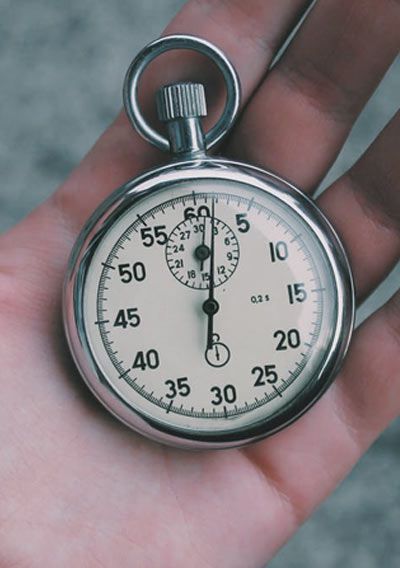"Chronometer" vs. "Chronograph": Understanding the Difference
In everyday conversations and written texts, we often use the terms "chronometer" and "chronograph" interchangeably.
However, these terms have distinct meanings, and they are frequently misused.
Below, we clarify the difference between these two terms.
Chronometer
A chronometer is a specific type of Swiss watch whose mechanical (manual or automatic) or quartz movement has been officially certified for precision.
Before receiving certification, the movement undergoes rigorous accuracy testing to meet strict timekeeping standards.
Testing Process
- Mechanical and pocket watches are tested for 15 days under continuous operation at different temperatures:
- Low (8°C)
- Medium (23°C)
- High (38°C)
In five different positions, simulating how a watch is worn on the wrist.
- Quartz watches undergo a similar 13-day test, with additional exposure to four different humidity levels, as quartz is highly sensitive to moisture.
- Wall and table clocks are tested for 19 days under the same temperature conditions.
If the time deviation between the different positions and temperatures falls within the acceptable limits set by Swiss chronometer standards, the movement receives official certification and a numbered certificate.
Chronometer accuracy tests are conducted using two independent atomic clocks synchronized to GPS time.
The COSC Certification
The most recognized institute for Swiss chronometer certification is the Contrôle Officiel Suisse des Chronomètres (COSC).
Swiss COSC Chronometer Standards
| Mechanical Movements | Quartz Movements |
| Average daily rate: −4/+6 [1] | Average daily rate at 23 °C: ±0.07 |
| Mean variation in rates: 2 [2] | Rate at 8 °C: ±0.2 |
| Greatest variation in rates: 5 [3] | Rate at 38 °C: ±0.2 |
| Difference between rates in H & V positions: −6/+8 [4] | Rate stability: 0.05 |
| Largest variation in rates: 10 [5] | Dynamic rate: ±0.05 |
| Thermal variation: ±0.6 [6] | Temporary effect of mechanical shocks: ±0.05 |
| Rate resumption: ±5 [7] | Rate resumption: ±0.05 |
| n/a | Residual effect of mechanical shocks: ±0.05; 200 shocks equivalent to 100 g (981 m/s², 3,217 ft/s²) |
A high-quality chronometer movement maintains a consistent time deviation, whether it runs slightly fast (“+”) or slow (“−”), ensuring reliability.
Chronograph
A chronograph is a complicated mechanism (either mechanical or quartz) designed to measure specific time intervals.
It consists of various components working together to record elapsed time, displaying the results on separate hands or digital displays, distinct from those showing the regular time.
Chronograph Features
- A chronograph mechanism can be installed in a:
-
- Manual or automatic mechanical movement
- Quartz movement
- Certified chronometer movement (but does not affect its chronometer certification)
- Independent energy system (self-powered chronograph module)
- The chronograph function can be started, stopped, and reset to zero using dedicated push-buttons on the watch case.
- It measures specific time intervals in seconds, minutes, hours, and even tenths of a second.
- Some chronographs also allow quick calculations for speed or distance using a tachymeter scale.
Important Distinction
A chronograph function cannot be certified as a "chronometer."
Conclusion
- A chronometer is a certified precision timepiece, tested under strict conditions to meet accuracy standard.
- A chronograph is a stopwatch function built into a watch, allowing it to measure elapsed time.
Although some watches are both chronometers and chronographs, the two terms describe completely different functions.

